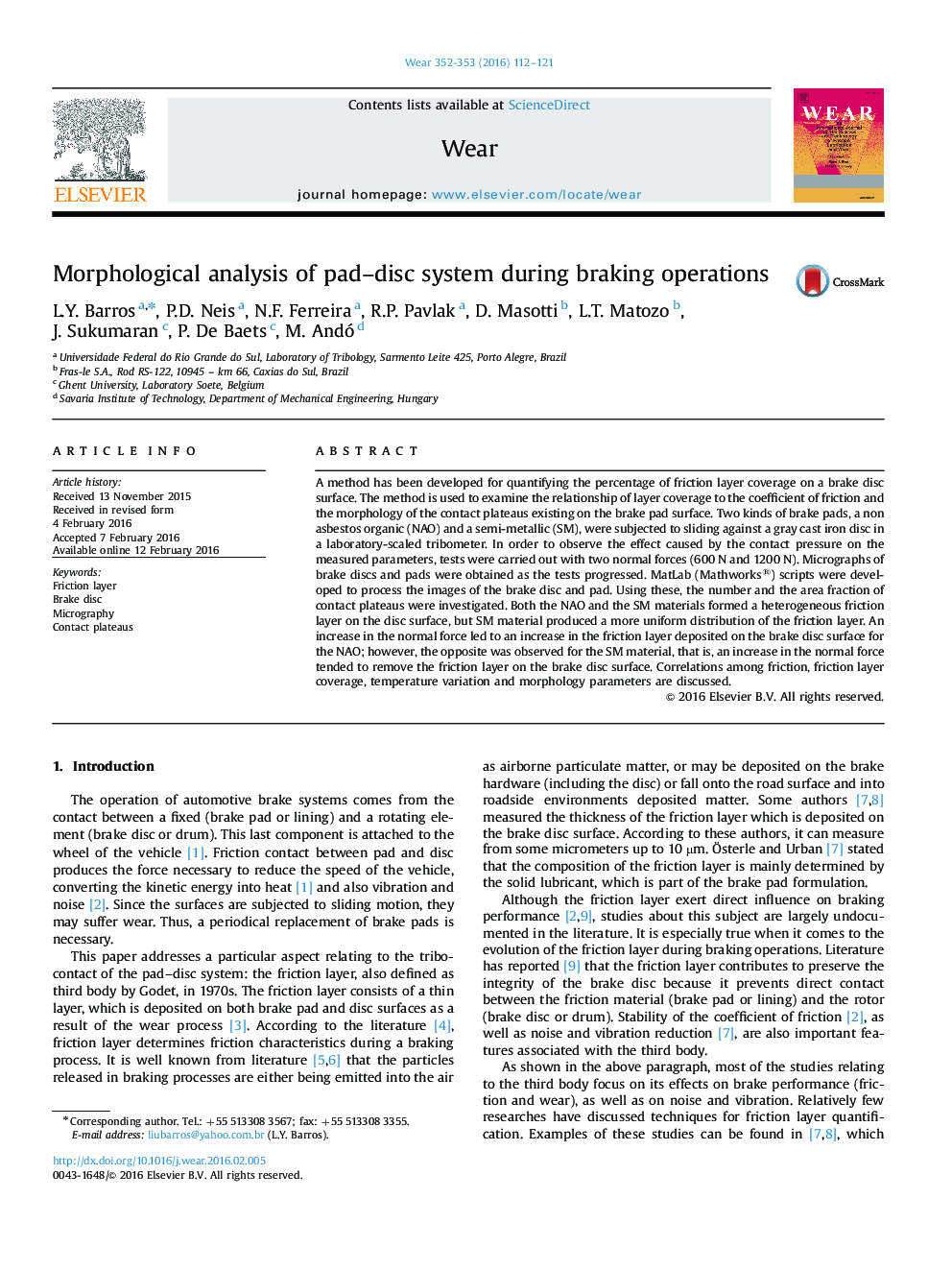| Article ID | Journal | Published Year | Pages | File Type |
|---|---|---|---|---|
| 616915 | Wear | 2016 | 10 Pages |
A method has been developed for quantifying the percentage of friction layer coverage on a brake disc surface. The method is used to examine the relationship of layer coverage to the coefficient of friction and the morphology of the contact plateaus existing on the brake pad surface. Two kinds of brake pads, a non asbestos organic (NAO) and a semi-metallic (SM), were subjected to sliding against a gray cast iron disc in a laboratory-scaled tribometer. In order to observe the effect caused by the contact pressure on the measured parameters, tests were carried out with two normal forces (600 N and 1200 N). Micrographs of brake discs and pads were obtained as the tests progressed. MatLab (Mathworks®) scripts were developed to process the images of the brake disc and pad. Using these, the number and the area fraction of contact plateaus were investigated. Both the NAO and the SM materials formed a heterogeneous friction layer on the disc surface, but SM material produced a more uniform distribution of the friction layer. An increase in the normal force led to an increase in the friction layer deposited on the brake disc surface for the NAO; however, the opposite was observed for the SM material, that is, an increase in the normal force tended to remove the friction layer on the brake disc surface. Correlations among friction, friction layer coverage, temperature variation and morphology parameters are discussed.
